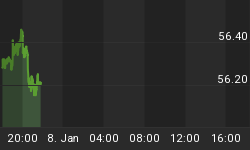Last month Nissan Motor Company made the surprising and unprecedented decision to temporarily shut three of its' four Japanese assembly plants, and cut output of several new models - not due to lack of demand - but due to a lack of steel.
The shutdown, and the fact that Nissan could not find alternative steel suppliers in the lucrative automobile market, illustrates how extreme the world's supply problems have become. Concerns have now surfaced that other Japanese auto manufacturers such as Honda and Toyota may soon face similar supply issues.
China Steel Demand Surges
China's huge and growing economy is consuming more and more basic materials each year, and as a result the steel and iron ore industry are booming. Prices for many steel products are running at three decade highs. China uses more steel than the U.S. and Japan combined, and is expected to use one-third of steel produced worldwide this year for infrastructure and other projects.
Since China became the largest steel consumer in the world in 1994, year after year it continues to break records in terms of steel consumption. Consumption increased 22% in 2003, and is expected to increase 13% or more in 2004. Many analysts see China's steel consumption growing 6% to 10% in 2005, down from this year's rate but still impressive. Total worldwide demand growth should be around 6%, so China is the dominant factor in this sector.
The heavy demand has allowed producers to increase prices of hot-rolled coil steel, which is processed into cold-rolled steel and used to make automobiles and electrical appliances, by 59 percent this year in China. While raw material prices such as coal and iron ore have increased significantly the last few years the tight market has allowed producers to raise prices even more, widening margins.
Several large steel companies negotiating annual prices expect double digit gains again in 2005, and several steel executives forecast that the tight market will continue. The strength of the market is impressive due to the fact that the top 10 steelmakers supply less than one-third of all steel produced, and historically global competition has moderated price increases.
Iron Ore Demand
Unlike the diversified nature of the steel producers, three companies control around 75% of the world's iron ore supply. Due to this concentration expansion of iron ore capacity will most likely be much slower than for the steel manufacturing sector. Prices for iron ore should therefore remain elevated as demand pressures worldwide ore supplies.
China purchases around one-third of the world's production of iron ore and China's imports of ore next year may be 35% larger than 2003 levels. Due to the demand increase another sizeable jump in annual iron ore contract prices is anticipated in 2005. The price of ore increased around 20% this year from year earlier levels. Expectations vary, but the consensus forecast is for a double-digit percentage increase. Some market-watchers believe prices could rise by more than 20% in 2005 - but we think this projection is a bit aggressive.
In light of the supply issues steelmakers dependent on imported iron ore are taking steps to secure future supplies. Some are signing new long-term agreements, and in other cases steel makers are buying equity positions in iron mines or coal companies to guarantee supply.
Cyclical Nature of Steel Sector
The iron and steel sector is cyclical by nature. Until the last year or so investments to increase furnace, milling or iron ore production capacities were infrequent due to the depressed prices in the sector. Worldwide demand has changed the outlook very quickly. The key to the market is China, and while China's economy is slowing it will probably expand at a healthy 8.4% rate in 2005 according to the median forecast of eight economists surveyed by Bloomberg News last week.
That said, even with a growing economy investment in steel projects in China rose 41 percent in the first 10 months of this year. At some point the additional capacity being built will meet the slowing demand. In addition, the cost of the inputs to the steel sector have increased significantly - prices for coking coal jumped roughly 30 percent in some markets and freight rates have soared. Natural gas, where it is used as a fuel source, has also become much more costly in many markets. But to date, it appears demand will push prices and margins up in the sector well into 2005.
Investment Considerations
Our quantitative screens incorporate both fundamental and technical factors into our stock selection process, and they have identified a number of appealing companies in the sector. To our surprise, the iron and steel group is one of the most attractive from a technical standpoint right now. This means that institutional investors might look to invest in larger iron and steel firms using "trend following" investment criteria, adding to investor interest in this neglected sector.
Because of the cyclical nature of the industry, the worldwide competition, the lack of investor interest, and the deficiency of small firms in such a capital intensive business we have historically ignored this sector. But the lack of spare capacity in today's market is apparent, and the supply and demand relationship should be very attractive for steel and iron ore producers - and investors - as we enter 2005. And the weakening U.S. dollar allows domestic firms to increase margins at the expense of foreign competitors.
















